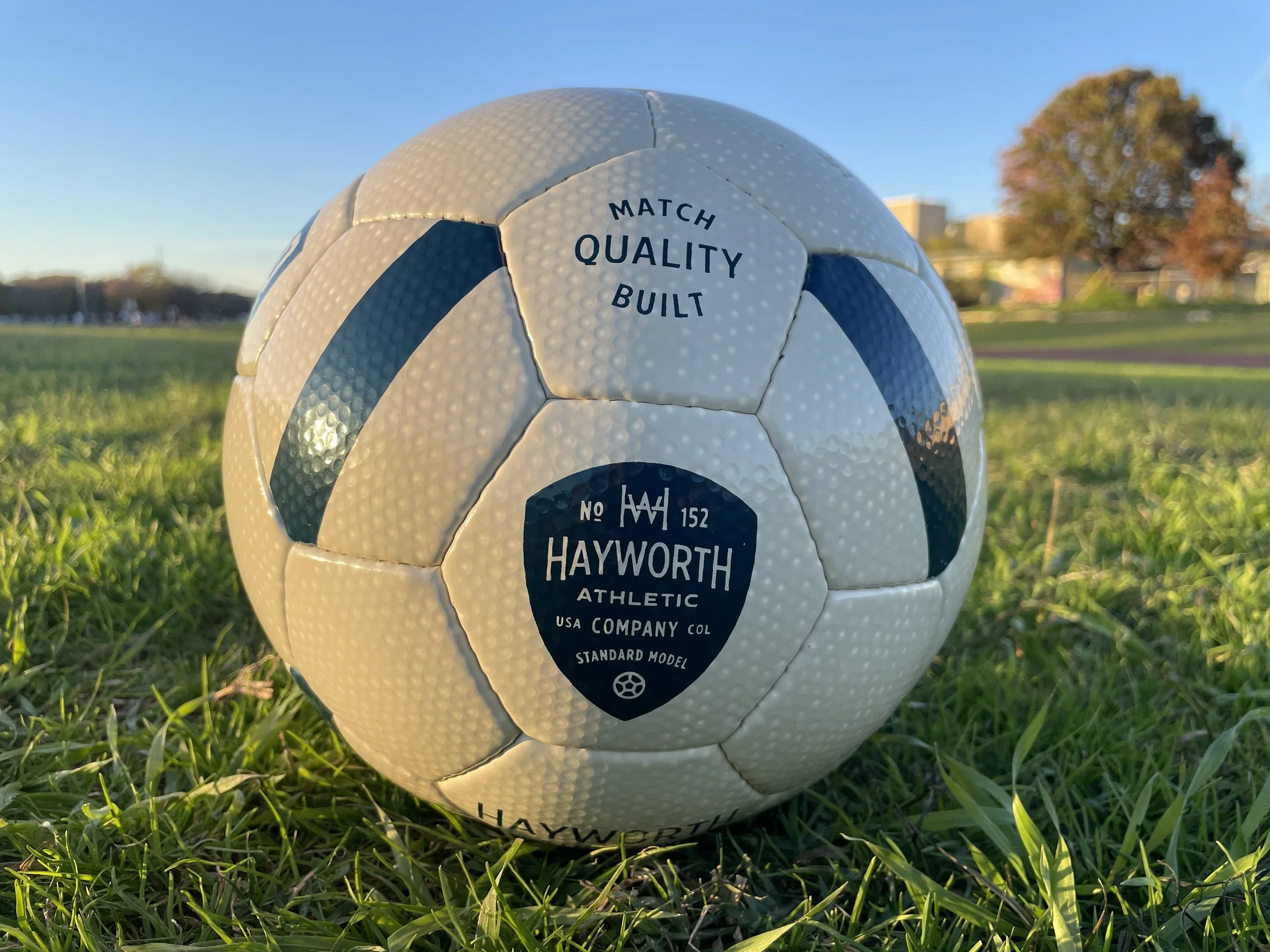
Tradition and Innovation in One Beautiful Ball
The Story of Hayworth Athletic

Hayworth soccer balls are designed in Austin, Texas, and workshop-made in the ancient Andean village of Mongui, Colombia, a community with a century-long tradition of ballmaking.
Honoring the integrity of the craft and the dignity of the craftspeople, Hayworth pays workers middle class wages.
Ten thousand feet above the sea, deep in the Colombian Andes, sits Mongui. Though only officially founded in 1601, the lost tribe of Muiscas inhabited these sacred lands for centuries before. The people of Mongui have lived in harmony with nature for hundreds of years and are the guardians of the Páramo de Ocetá, a high-altitude rain forest that is an irreplaceable source of water and home to otherworldly fauna.
In 1932, a territorial war related to heavy tariffs on sugar in the Amazon erupted between Peru and Colombia. A young Monguiseño named Froilán Ladino was called up for duty to fight in the war and was sent to Manaos, Brazil. There, Froilán met Brazilian saddlers who taught him how to make leather soccer balls. When he returned to Mongui, he started a tannery with his brother Manuel, and together they taught twelve people in the village how to make soccer balls.
They became known as the twelve apostles, and together they spread the knowledge of soccer ball making throughout the village. These are the origins of what now makes Mongui the soccer ball capital of Colombia, and perhaps the Americas.
In the 1940s, more than 350 families produced 3,500 soccer balls each week. Production continued to boom for the next 60 years, until Chinese manufacturing drove down pricing.
In 2012, Hayworth’s founder discovered that seventy percent of all the world’s soccer balls (three million balls per month) were made in one city in northern Pakistan, in a place called Sialkot. He knew he had to go there, he had to see it with his own eyes.
There, he explored the phases of ball making, the factories, the layers of production. He went to the homes of stitchers, and he listened to and watched the people who made the balls. He absorbed all he could of the industry’s complexity, the beauty of the craftsmanship and the massive teamwork involved in the making of a ball.
But he also saw something much darker – an industry rife with grueling labor conditions and exploitative low wage practices. He was as unsettled as he was inspired, and he knew that this would become one of the great endeavors of his life – to build a beautiful soccer ball, and to build it in a beautiful way.
Six years later, he still hadn’t given up on the idea. It was then that he discovered the soccer ball tradition in Mongui. When he arrived there for the first time, the second person he met was a young man named Guillermo Blanco. Guillermo was full of ambition, courage and creativity. He believed in social justice and he was proud to be a Monguiseño.
Their mutual encounter could only be explained as diosedencia. They believed in each other, that together they could make the most beautiful handmade soccer ball in the world. They knew that for the ball to be truly beautiful that it must be built with a foundation of honor and respect for those who make it. Integrity for its workers was as important as the materials they used.
With hope in their hearts and patience in their hands, for the next five years they never gave up on that belief. With the addition of their Production Manager, Jhon Fred, who has the energy of a freight train and the mind of a mad scientist, they imported and tested materials from all over the world until they found the best combination of materials and processes. Finally, on the 152nd prototype, they built what they believe is the best handmade soccer ball in the world, the Hayworth Standard Model.











